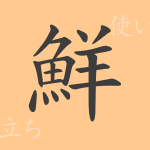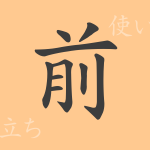In Japanese literature, each kanji not only conveys unique meanings but also carries a rich history, deeply influencing the culture and language. This article delves into the kanji “全” (ぜん), exploring its origins, meanings, applications, and its role within the Japanese language and culture. We will also explore its related phrases and idioms, enriching our understanding of this integral character.
Origins of 全
The kanji “全” originated in ancient China. Its form combines “王” (king) and “入” (enter), symbolizing ‘complete protection under a kingdom,’ which evolved to mean ‘everything’ and ‘complete.’ This character, therefore, encapsulates concepts of totality and perfection.
Meaning and Usage of 全
“全” means ‘all,’ ‘complete,’ or ‘entire.’ In Japanese, it forms words like “全員” (everyone), “全力” (full effort), and “全国” (nationwide), expressing totality. It is also used in the negative form “全く” to mean ‘not at all’ or ‘absolutely.’
Readings, Stroke Count, and Radical of 全
“全” has several readings and uses, depending on the context:
- Readings: On’yomi “ゼン”, Kun’yomi “まったく”, “すべて”
- Stroke Count: 6 strokes
- Radical: “入”
Phrases, Idioms, and Proverbs Using 全
Many phrases and idioms incorporate “全,” each reflecting aspects of Japanese culture:
- 全力 (ぜんりょく): Using all one’s might.
- 全快 (ぜんかい): Complete recovery from illness or injury.
- 全盛期 (ぜんせいき): A peak or golden age.
- 全知全能 (ぜんちぜんのう): Omniscience and omnipotence.
- 全くもって (まったくもって): Truly, indeed—a phrase used for emphasis.
Conclusion on 全
The kanji “全” enriches Japanese language with its notions of completeness and entirety. From daily conversation to business and literature, “全” plays a pivotal role. Each encounter with this character is an opportunity to reflect on its profound history and significance.

























